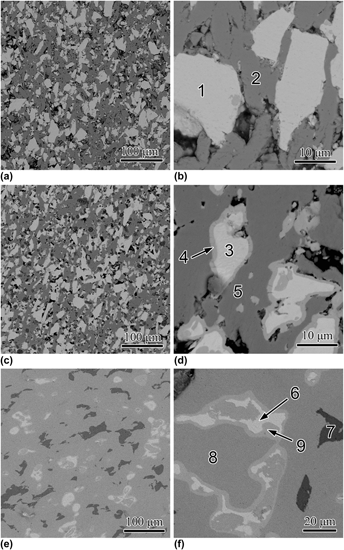Article contents
Synthesis and characterization of NbCr2 Laves phase produced by spark plasma sintering
Published online by Cambridge University Press: 12 February 2016
Abstract

The NbCr2 Laves phase was fabricated by spark plasma sintering (SPS) using spherical Nb and Cr powders. The experimental results revealed that increasing the sintering temperature to 1773 K can result in the formation of NbCr2 Laves phase as major phase, but it always appeared with trace amounts of Nb and Cr solid solutions. Based on the theoretical calculations, the residual of Nb and Cr solid solutions was attributed to the inhomogeneous distribution of temperature increase from the particle-contacting surface to the center of particle when pulsed current passed through. Moreover, the hardness and fracture toughness of the SPS-processed NbCr2 attained 14.05 ± 0.67 GPa and 8.9 MPa·m1/2, which were 1.6 and 7.4 times of the as-cast NbCr2 Laves phase (1.2 MPa·m1/2). The formation of ductile Nb and Cr solid solutions and fine grains were considered to be the reason for the remarkable enhancements in mechanical properties.
- Type
- Articles
- Information
- Copyright
- Copyright © Materials Research Society 2016
Footnotes
Contributing Editor: Jürgen Eckert
References
REFERENCES
- 5
- Cited by




